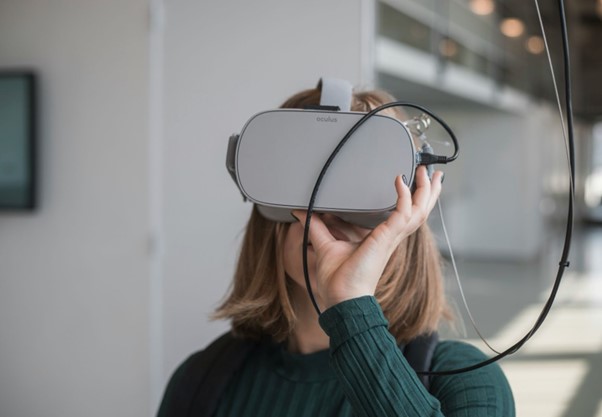In the ever-evolving landscape of education, technology plays a pivotal role in shaping how students learn and interact with complex concepts. Among the myriad of technological advancements, virtual reality (VR) stands out as a game-changer, especially in how it’s being utilized at Pures College to revolutionize the educational experience.
- Introduction to VR in Education
- Pures College’s Approach to Integrating VR
- Enhancing Scientific Understanding
- Simulating Real-World Engineering Challenges
- Exploring Historical and Geographical Locations
- Benefits of VR in Learning
- Improved Engagement and Motivation
- Accommodates Different Learning Styles
- Safe Environment for Trial and Error
- Challenges and Considerations
- Conclusion
Introduction to VR in Education
Virtual reality in education is more than just a technological novelty; it’s a dynamic tool that transforms traditional learning environments into immersive, interactive experiences. By wearing VR headsets, students can explore three-dimensional environments that simulate real-life scenarios or create fantastical worlds that aid in learning. This technology has the potential to increase student engagement, improve retention of information, and make learning more appealing.
Pures College’s Approach to Integrating VR
Pures College has embraced VR technology as a core component of its teaching strategy, particularly in fields where practical experience is crucial but difficult to gain in a classroom setting. Here are some of the ways the college has successfully integrated VR into its curriculum:
Enhancing Scientific Understanding
In science courses, particularly in anatomy and physiology, VR allows students to explore the human body in a way that textbooks cannot. Through VR, students can perform virtual dissections and study bodily systems in 3D, providing a deeper understanding of the human body’s structure and function. This hands-on approach helps students visualize and comprehend complex biological processes.
Simulating Real-World Engineering Challenges
Engineering students here use VR to simulate real-world engineering challenges, allowing them to experiment with building structures, electrical circuits, and mechanical systems in a controlled, risk-free environment. This application of VR not only reinforces theoretical knowledge but also enhances students’ problem-solving and critical-thinking skills.
Exploring Historical and Geographical Locations
History and geography lessons are also transformed through VR, enabling students to virtually visit historical sites and geographical wonders around the world. This immersive experience fosters a better understanding of cultural contexts and historical events, making learning more engaging and less abstract.
Benefits of VR in Learning
The use of VR technology in education offers several key benefits:
Improved Engagement and Motivation
VR makes learning more interactive and enjoyable, which can significantly increase student engagement and motivation. When students are interested in the material, they are more likely to pay attention and retain the information being taught.
Accommodates Different Learning Styles
VR caters to various learning styles, particularly visual and kinesthetic learners, by providing a hands-on experience that traditional teaching methods cannot offer. This inclusivity ensures that more students have access to learning in a manner that best suits their individual needs.
Safe Environment for Trial and Error
One of the most significant advantages of using VR in education is the ability to experiment in a safe environment. Students can engage in trial and error without the fear of real-world consequences, which is particularly beneficial in disciplines like healthcare and engineering, where mistakes can have serious implications.
Challenges and Considerations
Despite the benefits, integrating VR into education does not come without challenges. High costs of equipment, the need for technical support, and the potential for VR to be a distraction rather than a learning enhancement are concerns that this College continues to address. The college tackles these challenges by ensuring that VR is used to complement, not replace, traditional teaching methods and by providing adequate training for faculty to effectively incorporate VR into their courses.
Conclusion
Pures College’s innovative use of VR technology in education sets a precedent for how institutions can enhance learning experiences and prepare students for future careers. By integrating VR into various disciplines, This institution not only makes education more engaging and effective but also equips students with the skills necessary to excel in a technology-driven world. As VR technology continues to evolve, its potential to transform educational landscapes becomes even more promising, making it a critical tool in modern education.
WATCH TOP VIDEOS FROM NIGERIAN TRIBUNE TV
- Relationship Hangout: Public vs Private Proposals – Which Truly Wins in Love?
- “No” Is a Complete Sentence: Why You Should Stop Feeling Guilty
- Relationship Hangout: Friendship Talk 2025 – How to Be a Good Friend & Big Questions on Friendship
- Police Overpower Armed Robbers in Ibadan After Fierce Struggle






